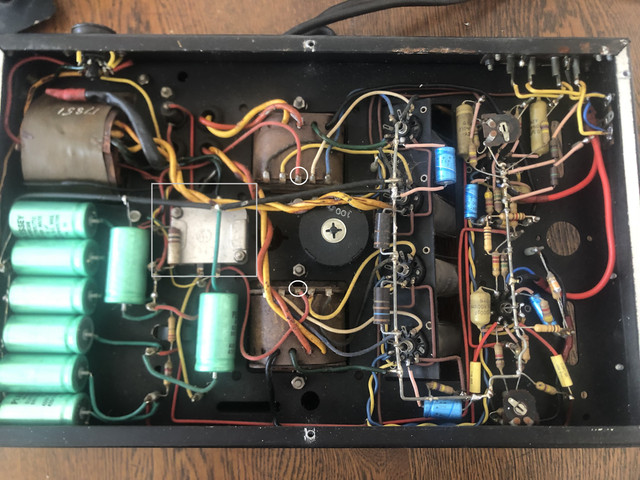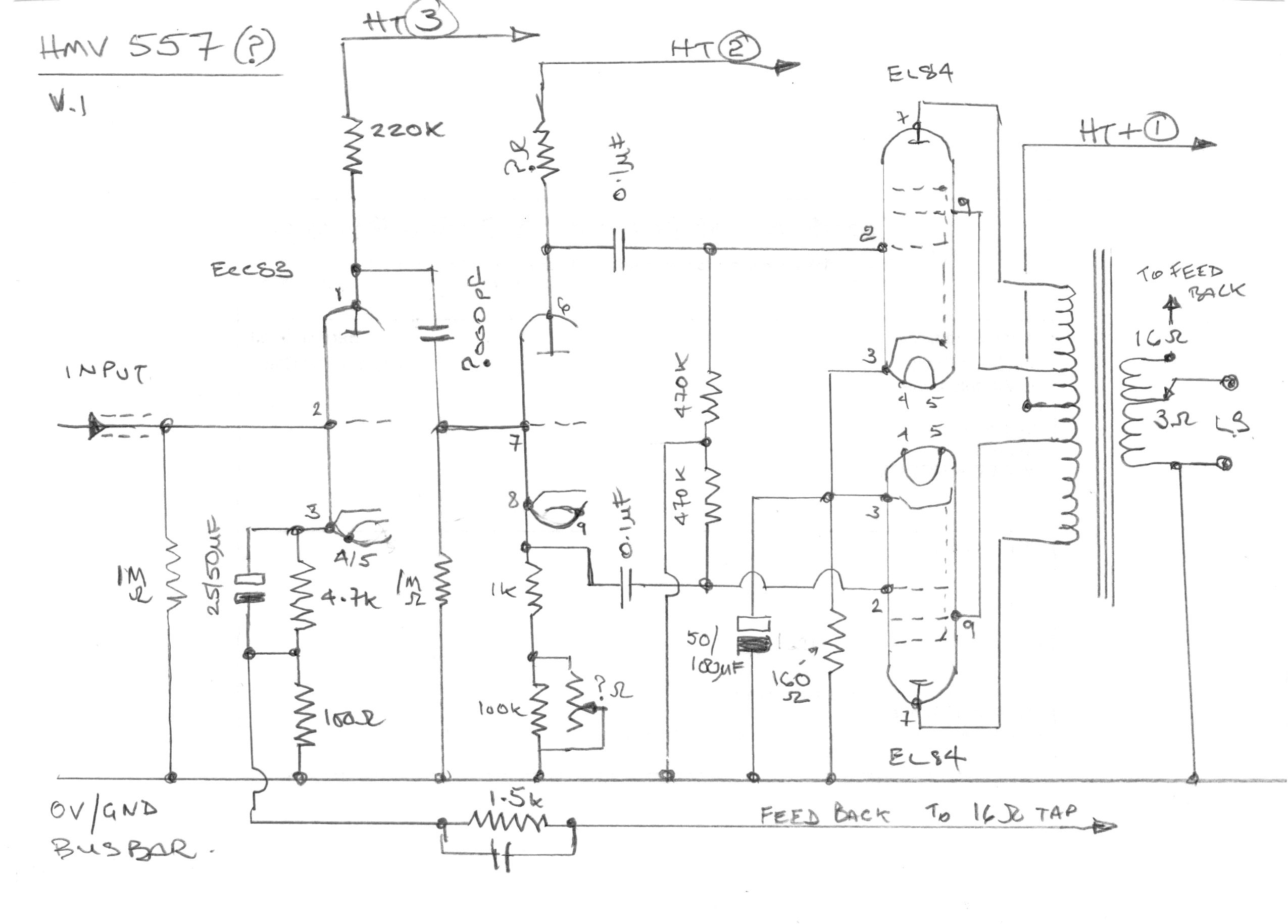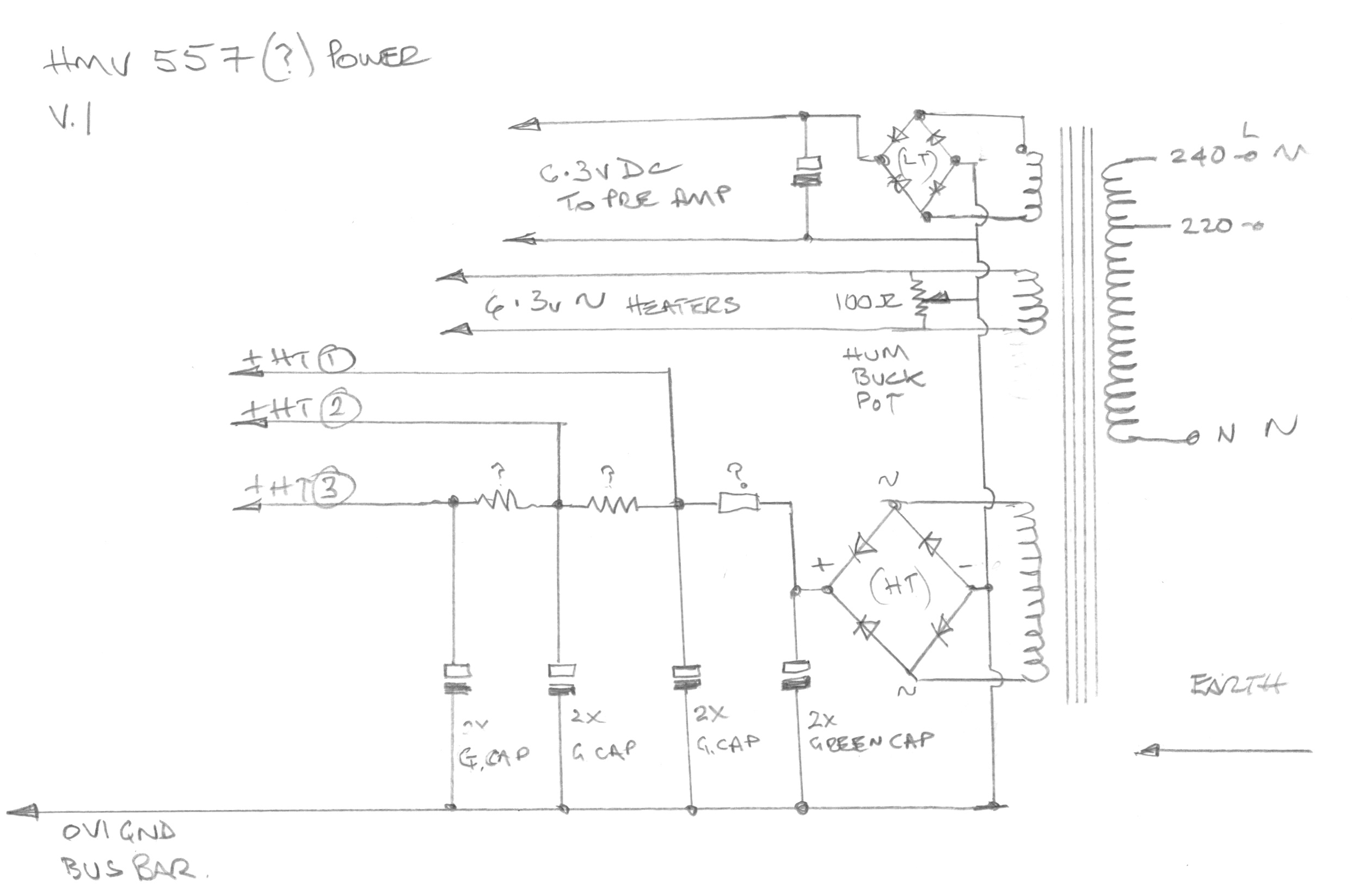During the first lockdown I was bored and fiddling with random things, a friend of mine gave me this pre amp and power amp set, said it used to belong to his dad. I put it on the shelf at my parents at the time and just forgot about it as I didn't have access to a valve tester thanks to covid.
I came back to my parents this weekend and found it again, and started doing a bit of digging. I can barely find any info online, I think they are the 557 and 599 models. It has Mullard valves, but also a brand called De Banks which I've never heard of before. One channel is De Banks and the other is Mullard in both the pre and power amp, so I think someones changed them over the years perhaps. Everything else looks original, I think this is late 50s.
I'd like to try and use it, but with around 10w I don't have many choices for speakers. Also I think all the passives will need changing, which isn't a quick job, and since I can't find any schems I'd also be flying blind. Was thinking of using a variac to turn it on for a test, but I can't imagine it'll be functioning correctly after nearly 70 years of sitting on a shelf.
Anyone ever seen or heard these before?
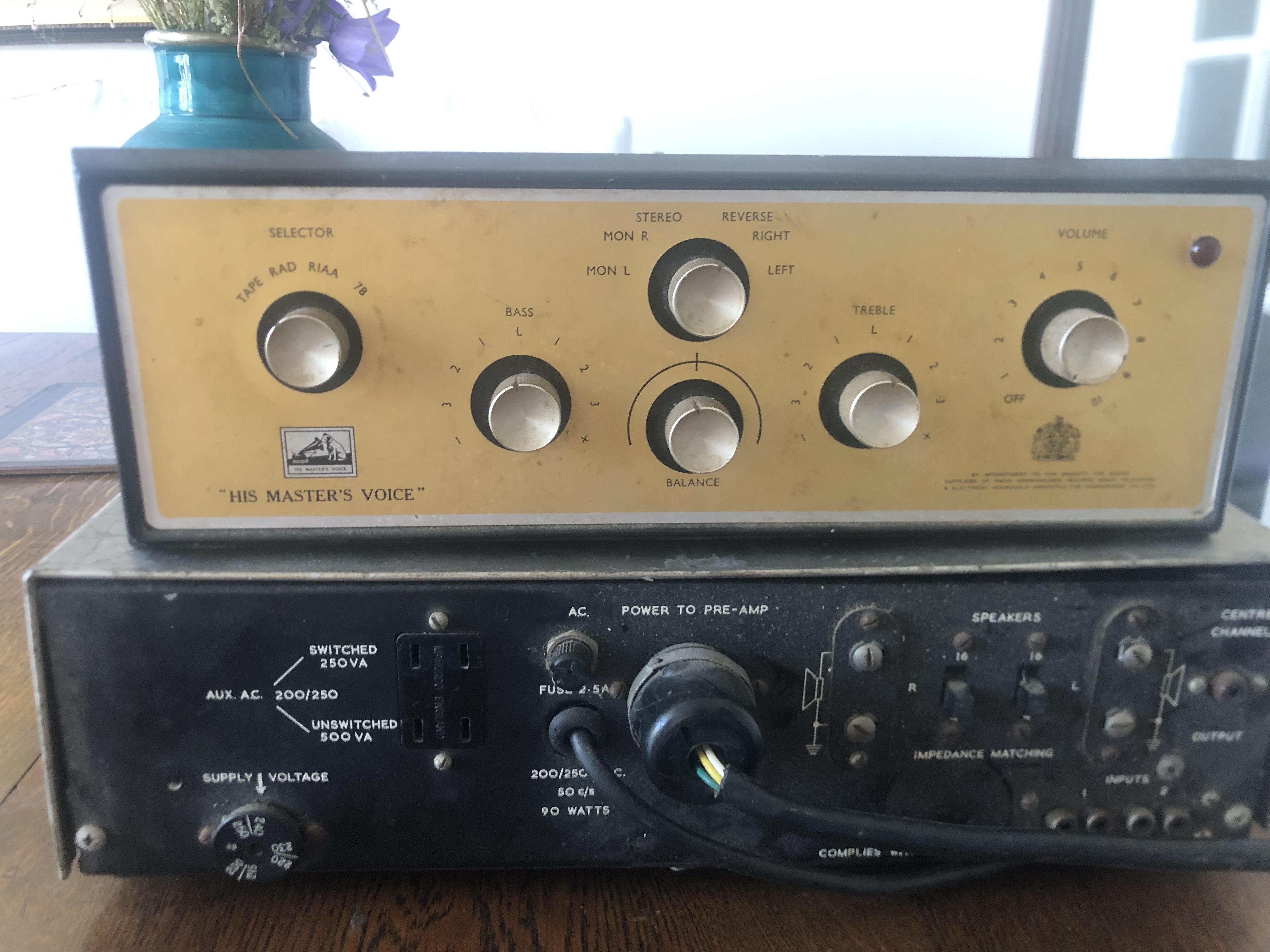
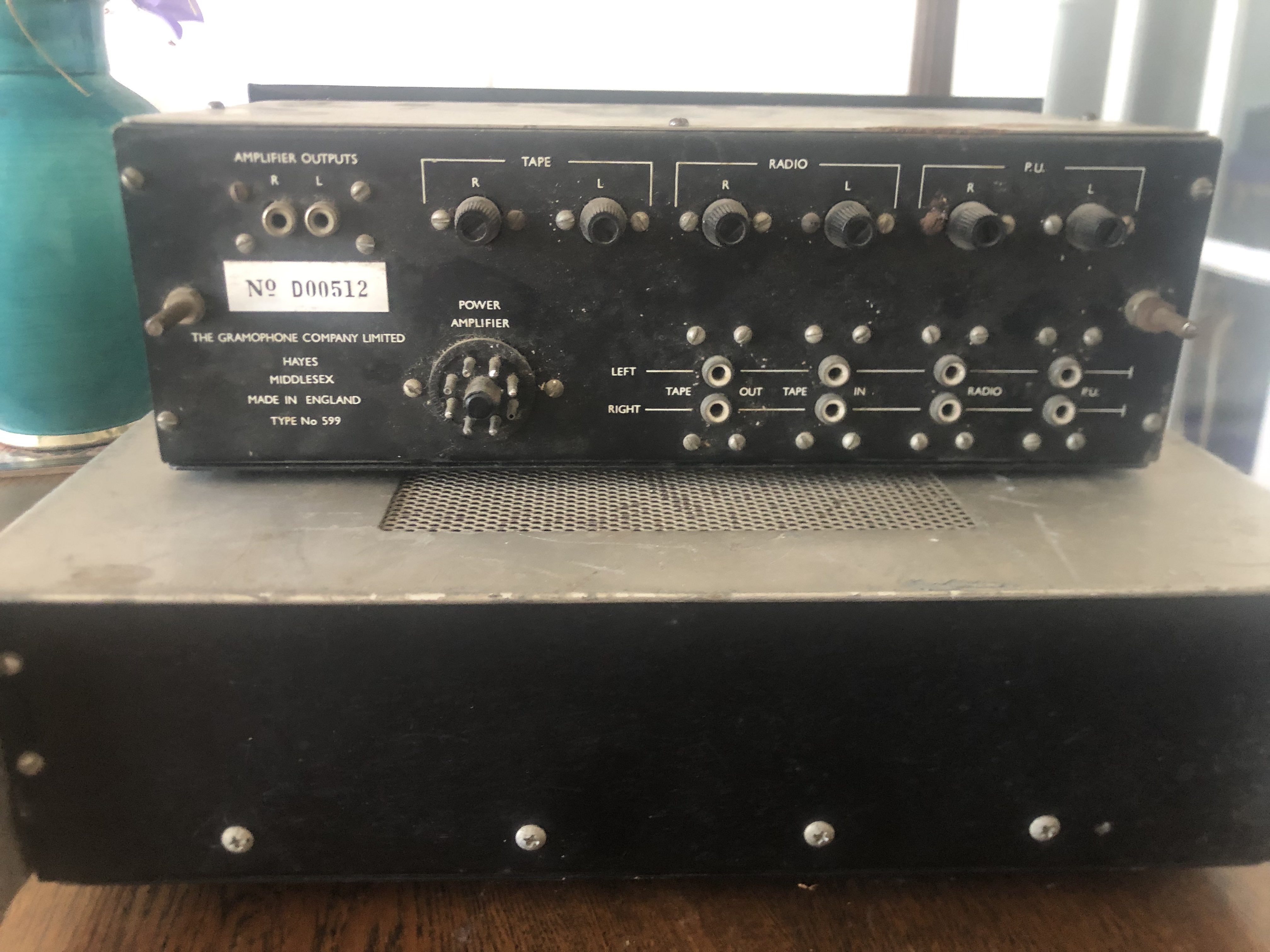
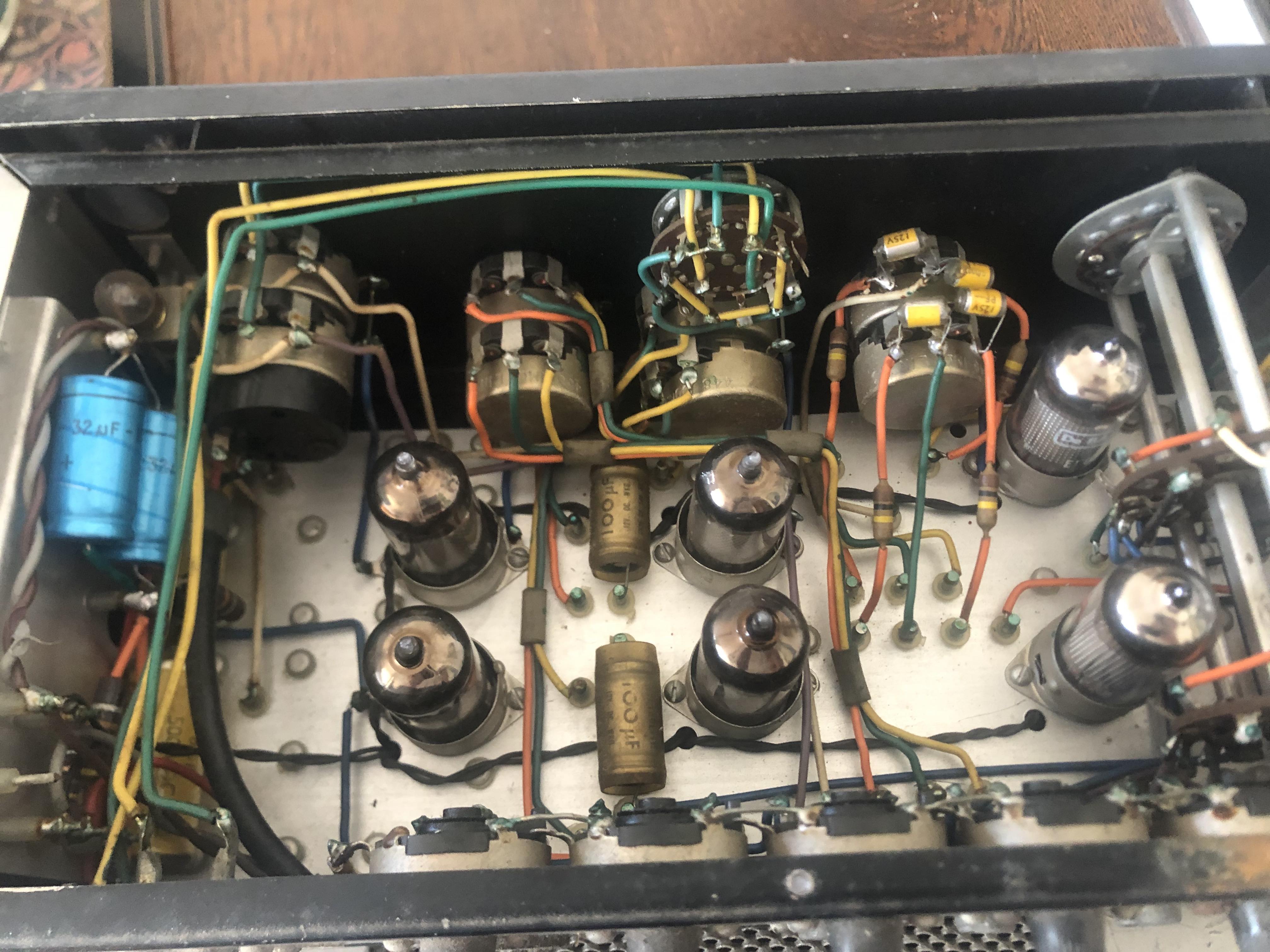
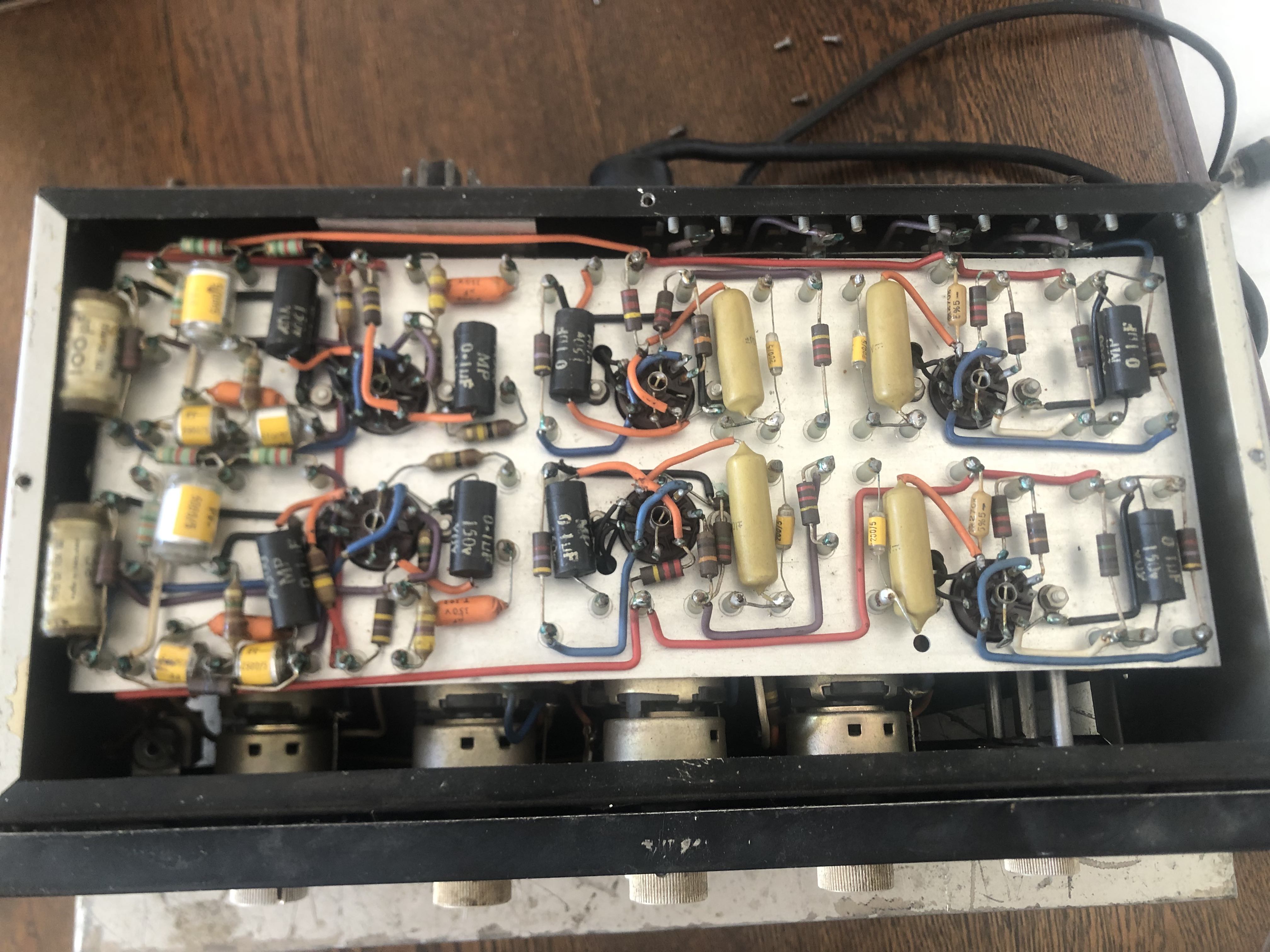
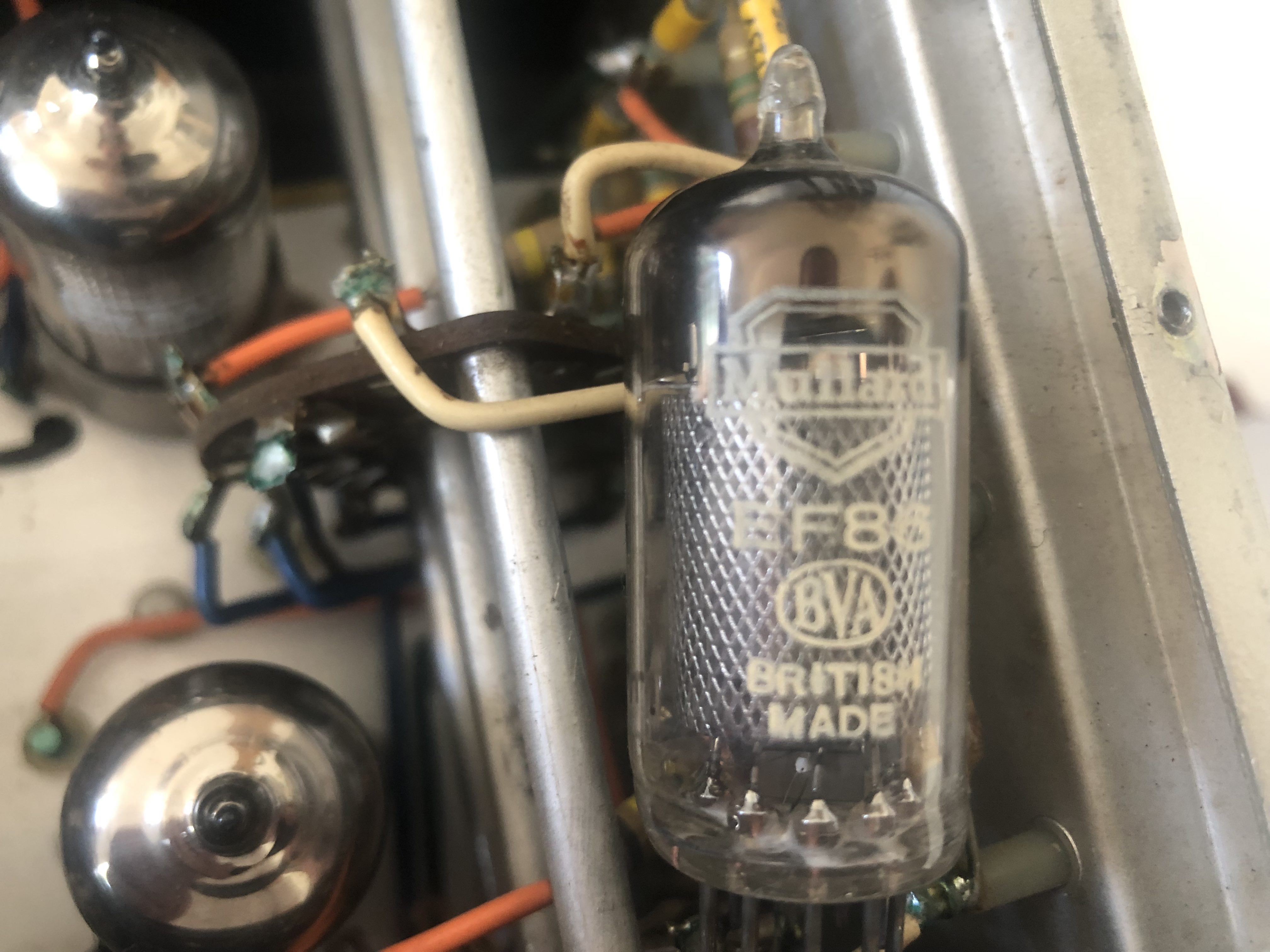
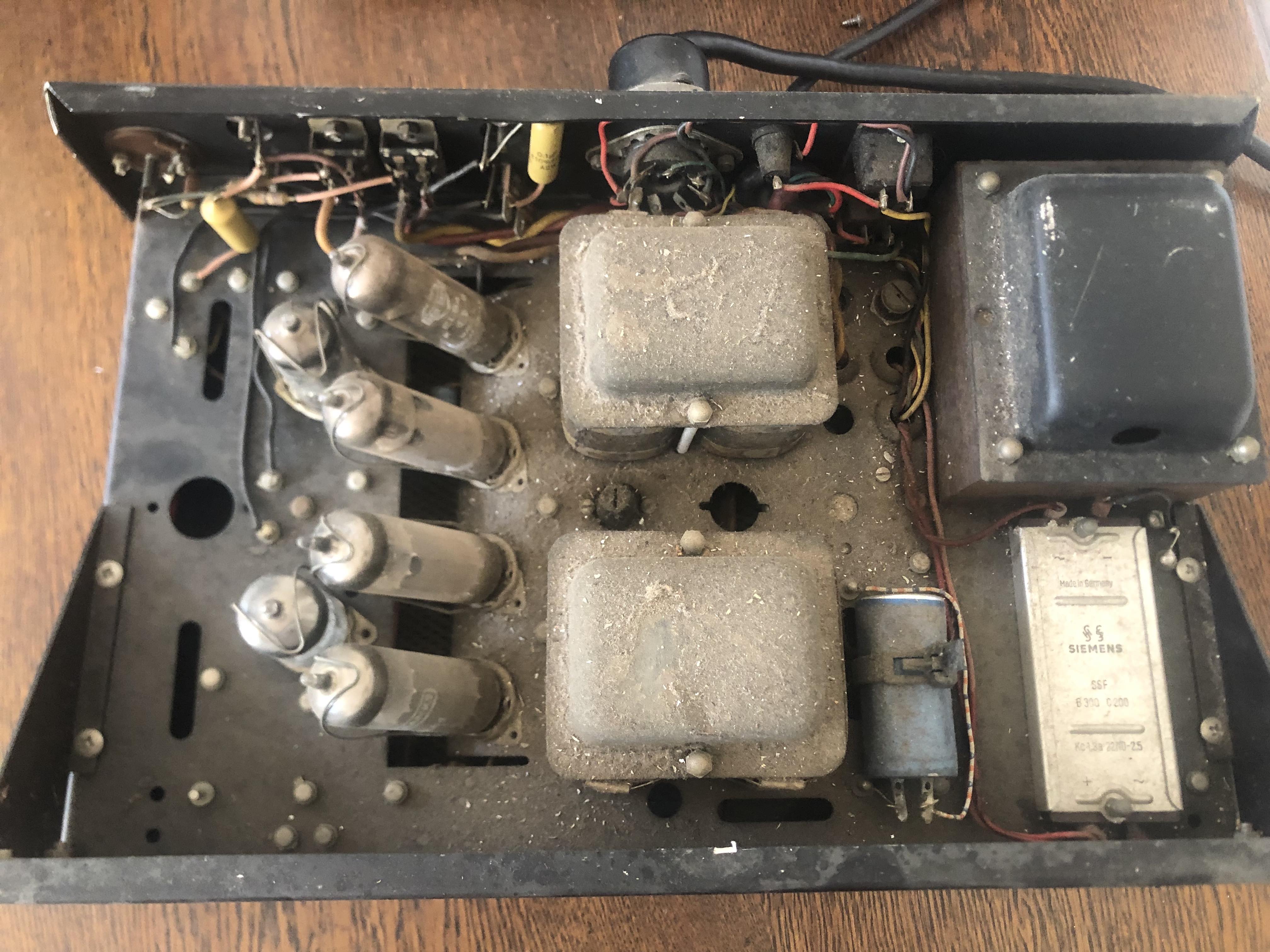
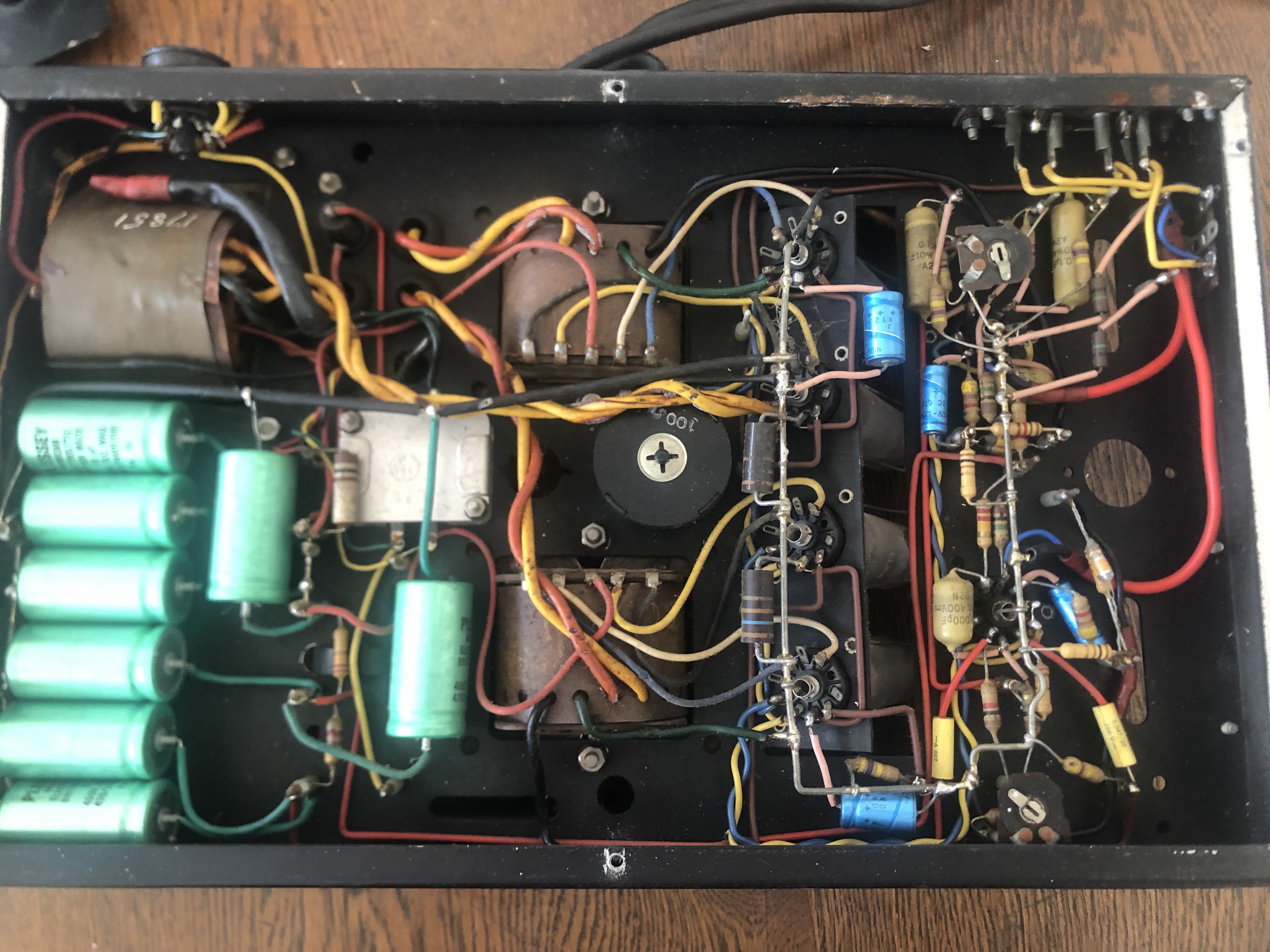
I came back to my parents this weekend and found it again, and started doing a bit of digging. I can barely find any info online, I think they are the 557 and 599 models. It has Mullard valves, but also a brand called De Banks which I've never heard of before. One channel is De Banks and the other is Mullard in both the pre and power amp, so I think someones changed them over the years perhaps. Everything else looks original, I think this is late 50s.
I'd like to try and use it, but with around 10w I don't have many choices for speakers. Also I think all the passives will need changing, which isn't a quick job, and since I can't find any schems I'd also be flying blind. Was thinking of using a variac to turn it on for a test, but I can't imagine it'll be functioning correctly after nearly 70 years of sitting on a shelf.
Anyone ever seen or heard these before?









